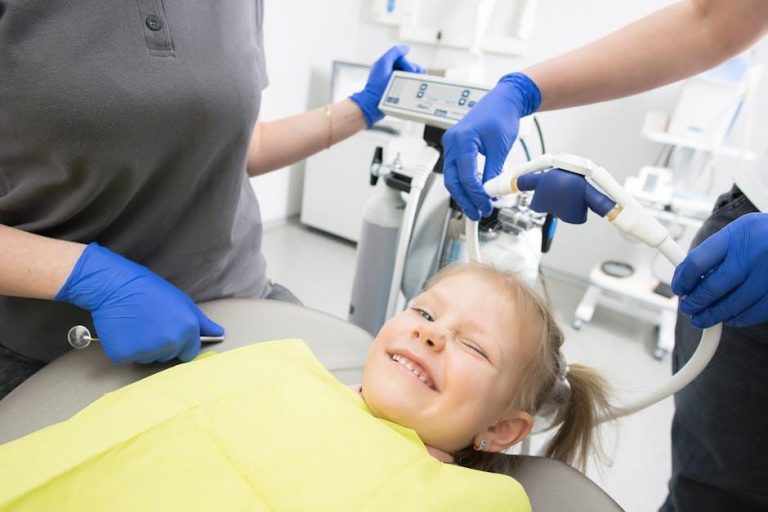1 in 3 Kids Has Dental Problems, Poll Finds – U.S. News & World Report
Recent findings by a nationwide poll reveal that 1 in 3 children in the United States suffers from dental problems, underscoring a growing public health concern. As parents, educators, and healthcare providers grapple with this alarming statistic, understanding the causes, risks, and preventive measures for children’s oral health becomes vital.
Understanding the Scope of the Problem
Dental problems among children range from mild cavities to severe tooth decay and gum disease. The poll highlights that dental issues are not only widespread but often go untreated in a significant number of kids nationwide.
Key Poll Findings:
- 33% of children surveyed reported experiencing dental problems.
- Cavities were the most common issue, followed by gum inflammation and tooth sensitivity.
- Lower-income families and children with limited access to dental care are disproportionately affected.
- Many dental problems in children lead to missed school days and impact overall wellbeing.
Why Are So Many Kids Facing Dental Problems?
Several factors contribute to the high rate of dental issues among children in the U.S.:
1. Inadequate Oral Hygiene
Many children do not brush or floss regularly, leading to plaque buildup and cavities.
2. Diet High in Sugars and Processed Foods
Consumption of sugary snacks and drinks accelerates tooth decay by feeding harmful oral bacteria.
3. Lack of Access to Dental Care
Economic barriers, lack of insurance, and geographic disparities limit regular dental visits.
4. Insufficient Parental Awareness
Some parents underestimate the importance of primary teeth care, delaying dental checkups until problems arise.
Health Consequences of Childhood Dental Problems
Untreated dental problems can lead to severe health complications that extend beyond the mouth:
- Chronic Pain: Toothaches can disrupt eating, sleeping, and concentration.
- Infections: Cavities can develop into abscesses, risking serious infections.
- Speech and Developmental Issues: Poor oral health may delay language or affect jaw development.
- Low Self-Esteem: Visible decay or missing teeth can affect social interactions and confidence.
Practical Tips for Preventing Dental Problems in Kids
Good dental hygiene and preventive care are essential to reduce the prevalence of dental problems among children. Here are practical steps parents and caregivers can take:
- Encourage Regular Brushing and Flossing: Teach children to brush twice a day with fluoride toothpaste and to floss daily.
- Limit Sugary Foods and Drinks: Reduce consumption of candy, soda, and sweetened beverages.
- Schedule Routine Dental Visits: Visit the dentist every six months for checkups and cleanings.
- Promote Balanced Nutrition: Include fruits, vegetables, and dairy products that support oral health.
- Use Sealants and Fluoride Treatments: Discuss with your dentist the benefits of preventive treatments for cavities.
Case Study: Success Through Early Intervention
Take the example of the Springfield School District, which implemented a school-based dental care program targeting lower-income families. Within two years:
- The rate of untreated cavities among students dropped from 35% to 18%.
- Attendance improved by 10%, as fewer children missed school due to dental pain.
- Parents reported heightened awareness of dental hygiene practices at home.
This case highlights the power of education and access in tackling dental problems among kids.
Common Dental Problems in Kids – At a Glance
| Dental Problem | Symptoms | Prevention |
|---|---|---|
| Cavities (Tooth Decay) | Toothache, sensitivity, visible holes | Regular brushing, reduce sugar, fluoride |
| Gum Disease (Gingivitis) | Red, swollen gums, bleeding when brushing | Floss daily, dental checkups, good hygiene |
| Tooth Sensitivity | Sensitivity to hot, cold, or sweet foods | Use sensitive toothpaste, avoid acids |
| Dental Trauma | Chipped, cracked, or knocked-out teeth | Protective gear during sports, careful play |
How Schools and Communities Can Help
Combating childhood dental problems is a collective effort. Schools and communities play key roles by:
- Providing oral health education through curriculum and workshops.
- Organizing mobile dental clinics and screenings.
- Lobbying for policies that improve access to pediatric dental insurance.
- Partnering with local dentists to offer affordable care.
Conclusion
The startling statistic that 1 in 3 kids in the U.S. is affected by dental problems serves as a wake-up call for parents, educators, and policymakers alike. Prioritizing children’s oral health through early education, healthy habits, and improved access to dental care can prevent long-term complications and improve quality of life. By working together, families and communities can ensure brighter, healthier smiles for the next generation.
Remember: healthy teeth and gums are the foundation of overall well-being from childhood onward. Start early — your child’s smile depends on it!


